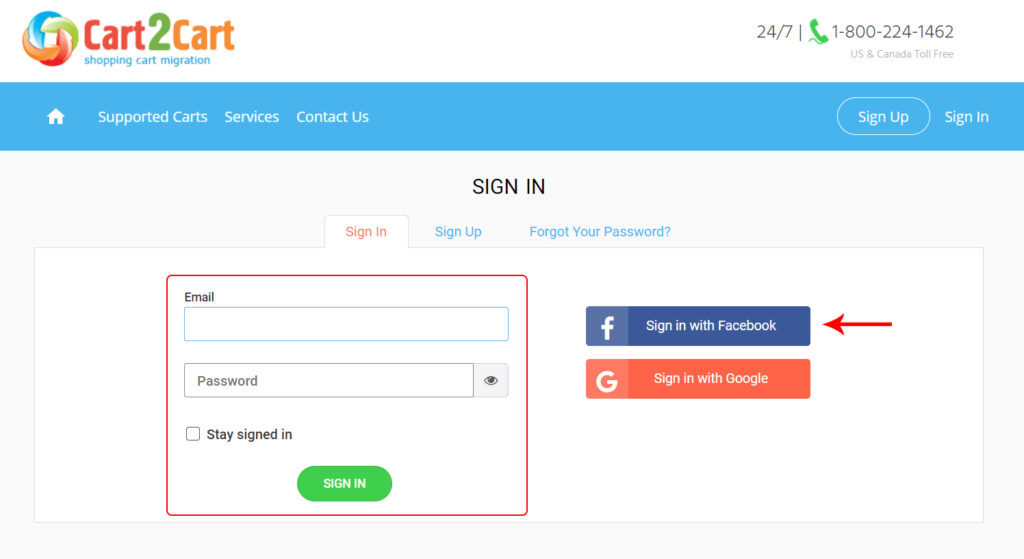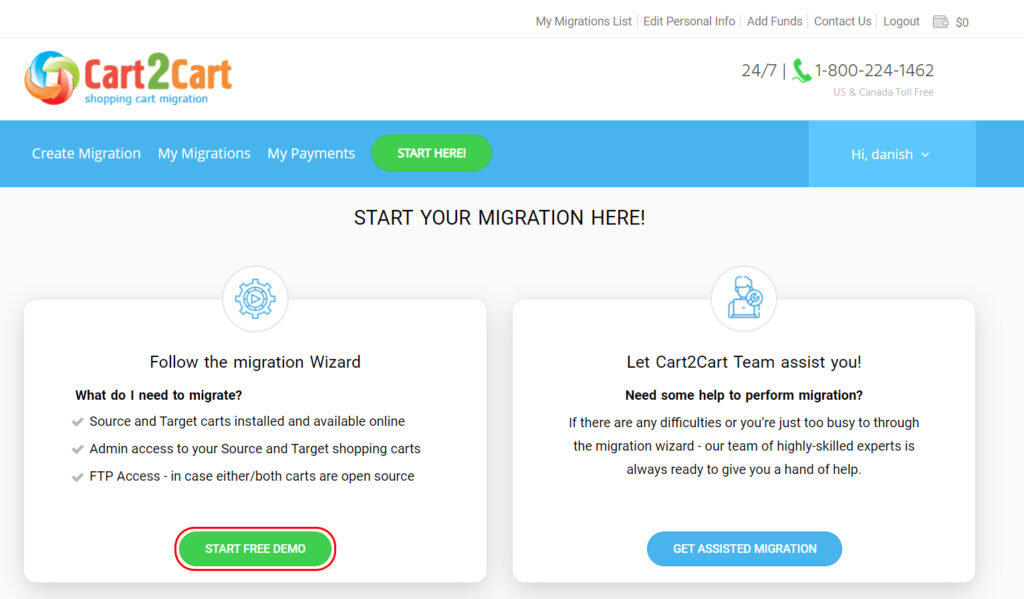Whether you’re reaching out to new customers or strengthening relationships with existing ones, your e-commerce platform needs to be up to par.
You’ve built your store on Magento, but now you’re considering a switch to WooCommerce.
let’s discover together and learn how to connect Magento to Woocommerce Migration without any data loss.
Why Do You Need Magento to Woocommerce Migration
Let’s start by addressing the big question: why migrate magento to woocommerce in the first place?
In 2023, WooCommerce dominated the global e-commerce software market with a 39% share. It was followed by Squarespace Online Stores with 14.95% and Woo Themes with 14.67%, taking second and third place respectively.
Magento has Only 8% market share.
Bonus Read: Should i Switch from Squarespace to wordpress?
WooCommerce Pros and Cons
| Pros | Cons |
|---|---|
| 1. User-Friendly: Simple and intuitive interface, ideal for beginners. | 1. Scalability Challenges: May struggle with very large catalogs and high traffic. |
| 2. WordPress Integration: Integrates with WordPress for faster content management. | 2. Reliance on Plugins: Heavy reliance on third-party plugins for additional functionality. |
| 3. Cost-Effective: Lower upfront and ongoing costs, for hosting and extensions. | 3. Limited Out-of-the-Box Features: Lacks some advanced e-commerce functionalities that require plugins. |
| 4. Flexible Themes and Plugins: Wide range of themes and plugins to customize your store. | 4. Security Concerns: Must stay vigilant about updates and security patches for plugins. |
| 5. Community Support: Vast community for troubleshooting and advice. | 5. Complexity with Growth: Managing large stores can become complex without proper optimization. |
| 6. SEO-Friendly: Integrates well with SEO tools and practices for improved visibility. | 6. Limited Analytics: Default analytics options may not be as comprehensive as other platforms. |
Magento Pros and Cons
| Pros | Cons |
|---|---|
| 1. Advanced Customization: Offers extensive options for custom development and design. | 1. High Learning Curve: Requires technical expertise to utilize effectively. |
| 2. Scalability: Handles large product catalogs and heavy traffic. | 2. Expensive: Higher hosting and maintenance costs compared to other platforms. |
| 3. Robust Features: Includes powerful e-commerce tools and functionalities. | 3. Complex Migration: Migrating from older versions or other platforms can be challenging. |
| 4. Multi-Store Management: Manage multiple stores from one dashboard. | 4. Resource-Intensive: Can demand significant server resources for optimal performance. |
| 5. High Performance: Optimized for speed and fast loading times. | 5. Limited Community Support: Smaller user community compared to platforms like WooCommerce. |
| 6. Advanced Analytics: Offers in-depth insights for data-driven decision-making. | 6. Complex Extensions: Custom extensions can be complex and expensive to develop. |
Migrate Products from Magento to Woocommerce – Pre Migration
Step#1 – Magento Backup
Before migrating from Magento to WooCommerce or conducting any other cart-to-cart migration, ensure your source store’s database is up-to-date and securely backed up.
While no changes will be made to your data during migration, this step is crucial for preventing potential data loss.
To migrate Magento to WooCommerce, follow these data backup steps:
On the Magento Admin Panel, navigate to Select > Tools > Backup.
In the upper-right corner, choose the backup type: System Backup, Database, or Database and Media Backup.
Select your preferred backup options.
Assign a name to the backup file for easy identification. You can also activate maintenance mode during the backup to prevent data changes during the process.
Once the backup is complete, Magento will automatically disable maintenance mode and notify you.
Step#2 – Create WordPress Account
Before setting up WooCommerce, ensure that WordPress is already installed.
Choose Hosting
Opt for a hosting provider that supports WooCommerce installation. A reputable WordPress hosting service can simplify the full installation process, which is beneficial if you’re not tech-savvy.
Install WordPress
Alternatively, you can download the WordPress package and manually install it using the provided detailed instructions.
Find and Install a WordPress Theme
Choose a theme that suits your store’s design and functionality preferences.
Step 3: Install WooCommerce
To install WooCommerce in your WordPress admin panel:
Navigate to Plugins > Add New.
Search for “WooCommerce”.
Click Install Now.
Click Activate Now.
Once activated, you can begin your WooCommerce journey!
Step 4: Setup WooCommerce
Once WooCommerce is activated for the first time, a notification from the WooCommerce Setup Wizard will appear. You can follow the on-screen steps to configure your store.
Step 5: Using Cart2Cart Magento to Woocommerce Migration Plugin
To begin, visit the Cart2Cart website and register using your email address, Google, or Facebook.

Step 6: Start the Free Demo
After signing in, you have two options:
- Follow the migration wizard.
- Let the Cart2Cart Team handle the migration for you.
Opt for the first choice and use the migration wizard.
Click the Start Free Demo button.

Step 7: Provide Shopping Cart Details
You’ll see two dropdown menus. In the first, select Magento and enter its URL. In the second, choose WooCommerce and provide its admin URL and login credentials.
Then, click Choose Entities.

Step 8: Choose Entities for Migration
Select the entities you want to migrate. If you want to migrate everything, select all entities.

The migration process will take some time to complete. Once it’s done, you’ll receive a message indicating that the Demo Migration has been successfully completed.

Magento 2 to Woocommerce Migration
Transitioning to Magento 2 from a previous version or woocommerce can be a challenging process for any business.
The complexities of migrating involve not only transferring data such as products, customers, and orders but also ensuring compatibility with extensions and custom themes.
We have covered Shopify Woocommerce Integration in detail
Magento 2’s advanced architecture demands a comprehensive understanding to optimize performance and security.
The migration process requires careful planning and expert knowledge to avoid data loss or downtime.
Business owners may face hurdles such as reconfiguring settings and updating integrations.
Despite these challenges, the improved features and scalability of Magento 2 often make the effort worthwhile in the long run.
So its better to consult Woocommerce migration services. TechnologyAlly experts offer knowledge and experience, helping you avoid pitfalls and preserve data integrity.
Tips for Magento to Woocommerce Migration Plugin
Take It Step by Step
Don’t rush the process. Migrate data in phases to minimize disruption and errors.
Communicate with Customers
Inform your customers about the upcoming change and what they can expect.
Leverage Experts
Consider hiring expert woocommerce developers to guide you through the migrate magento 1 to woocommerce process.
Magento to Woocommerce Migration – Post Deployment Checklist
After successfully migrating from Magento to WooCommerce, it’s essential to follow a comprehensive post-migration checklist to ensure a smooth transition and optimal performance of your new WooCommerce store.
Here’s what you need to do
Verify Data Integrity
Double-check that all data—including products, orders, and customers—migrated accurately. Look out for any discrepancies and address them promptly.
Test Functionality
Go through all the key features of your new WooCommerce store, such as product pages, checkout process, and payment gateways, to ensure everything works seamlessly.
Check Themes and Plugins
Ensure your WooCommerce theme and plugins are compatible and up-to-date. Make adjustments as needed for better performance and visual appeal.
SEO Audit
Review your URLs, meta tags, and keywords to ensure continuity of your SEO strategies from Magento. Update any settings that may need tweaking.
Monitor Performance
Keep an eye on your store’s performance, including loading times and user experience. Optimize your store as needed for the best possible experience.
Migrate Magento 1 to Woocommerce – Conclusion
Transitioning from Magento to WooCommerce can be a game-changer for your business.
With the right preparation, tech partner and support, you can initiate migrate products from Magento to Woocommerce process without any downtime.
Migrate Magento 1 to Woocommerce – FAQs
Is migrate products from Magento to Woocommerce difficult for startups?
While migration can be complex, with proper planning and the right tech partner such as Technologyally, it becomes manageable.
How long does it take to migrate Magento to Woocommerce?
The duration of the migration process depends on the size of your store and the complexity of your data. It can take anywhere from a few hours to a couple of days.
What happens to my SEO standings during magento to woocommerce migration plugin?
A well-executed migration should maintain your SEO rankings. Ensure that your new WooCommerce store’s URLs and meta data align with your previous Magento store.
Relevant Integration Guides:
How to link Ebay to Shopify Store








